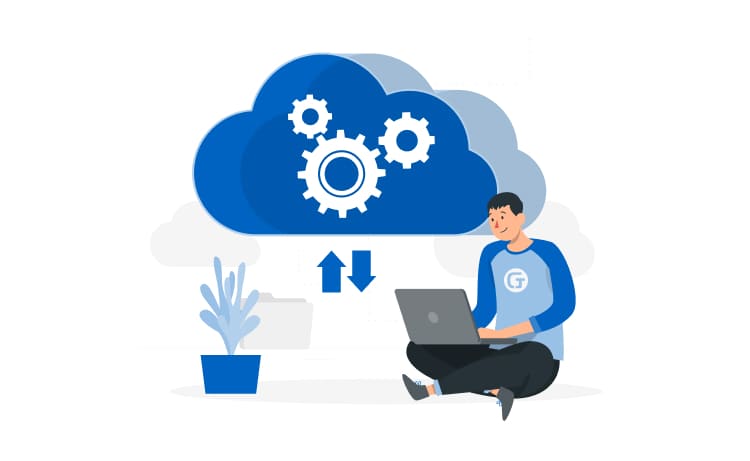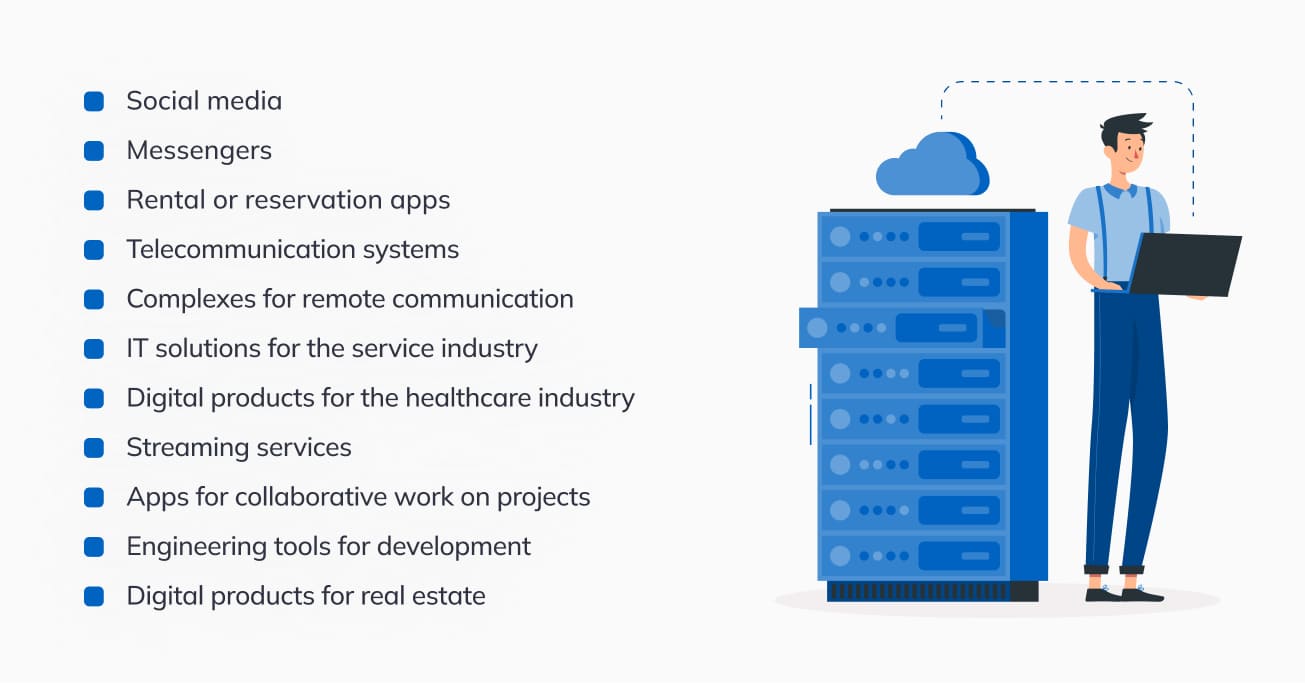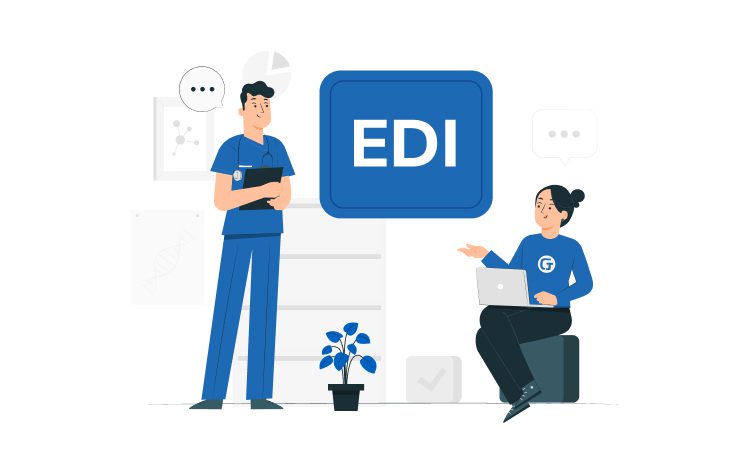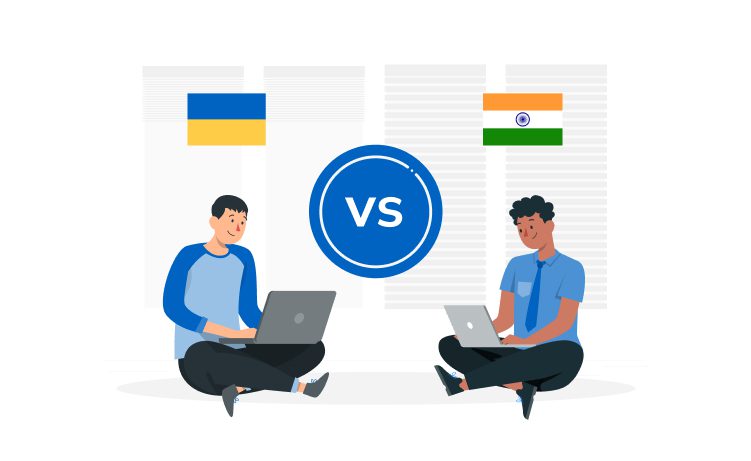
What Is Cloud Development? Exploring and Relevance in 2025



What is cloud development? Trends in the digital world show a growing trend in the global cloud ecosystem. It is external, independent hosting that can provide the best possible performance for apps or networks.
All kinds of modern software are actively deployed on the basis of cloud servers:

This allows not only remote access to consumer software functions but also the administration of digital products or businesses outside the office.
It is expected that as early as 2025, more than 95% of workloads will be distributed across cloud computing capacity, although in 2021, the figure barely reached 30%. This allows entrepreneurs to save on the hardware component of their business.
Global transit of data from local storage to the cloud, followed by deployment of SaaS solutions, will allow businesses to accelerate key processes and scale faster. It will also help protect confidential and corporate information. Cloud application development is a trend that will be relevant in the coming years, along with other IT market trends.
Content
In addition to cloud development, there are other trends directly or indirectly related to cloud technology. Some of them five years ago were considered something out of the realm of fiction. Today, they are included in the most popular IT products.
Ignoring them is considered a bad form in the industry, and business success almost always depends on the relevance of implementing progressive technologies in digital solutions. Pay attention to these trends if you want to maximize your audience’s exposure to your brand.
The digitization of anything and everything has led the world to a dilemma: manage all systems manually or hand over the administration to AI. The problem is that modern AI, even with ML, cannot yet provide proper autonomy to processes and operations both in the IT environment and in business.
RPA (Robotic Process Automation) technology is currently used as an alternative. This is a set of algorithms programmed to perform a single function or even a number of tasks cyclically. But even so, the disadvantage of AI cannot be leveled because it requires an experienced engineer to control the execution of the cycle of actions, as well as timely adjustment of the algorithms.
To deploy AI/ML/RPA technologies, the cloud is used. Only the combined performance of the servers can keep the algorithms running. Typically, they are included in SaaS products and experimentally optimized.
The trend toward using RPA/AI/ML technologies is widespread in the IT industry, even though they are far from perfect. In the coming years, working solutions will appear on the market, but until then, it is worth preparing the basis for the implementation of smart algorithms.
User experience is the cornerstone even in cloud development. It affects the business’s success because it is the target audience that determines how long and successful this or that enterprise will be in the market. The trend for better UX has overturned the IT industry in the last two years. Its echoes can be seen both in development and QA.
A good quality digital product is a combination of factors:
All of them, except the content, appear at the design stage and are finalized in creating a digital solution. It is the trendy approach to prototyping and structuring all software screens that can provide a high level of UX.
Ten years ago, developing an app of any complexity required a qualified team. Each specialist had to know one or more programming languages and had experience with frameworks.
Now, technologies such as LCAP (Low-Code Application Platform) and NCAP (No-Code Application Platform) have risen to the industry trends.
Using simple syntax (e.g., Gherkin) with its further translation through assembler into executable code will bring to the industry a fresh influx of specialists with progressive ideas but without development skills.
This will accelerate and simplify the software development process and set a new vector of IT development, particularly cloud development.
What is cloud development at the moment? These external platforms are deployed on cloud servers with integrated software development, scaling, and support tools.
SaaS solutions are a separate type of cloud software, which implies the deployment of each app, regardless of its functions and scope of business. In other words: you create a universal platform consisting of back-end and front-end elements and then develop programs or complexes based on it.
This simplifies the software release and even speeds it up because there is no need to write code from scratch, and finished fragments can be reused in other components or modules.
Cloud development is a fast and convenient way to deploy software or systems suites. A configured cloud computing environment with its own tools and modules. All of this speeds up the release of a digital product to market without compromising the quality or security of the IT solution.
With cloud development, end apps get all the functionality they need with much less development time. This is possible thanks to:
Sometimes cloud development is compared to a constructor, which has a ready-made platform and detailed documentation on the assembly process. This comparison is indeed appropriate, with one caveat: operations with the “body” of the cloud site require specialized skills and development experience.
In the final product, cloud development unlocks the potential of:
Depending on the type of cloud platform and its technical stack, the customer can choose the scale of the project, its functionality, and monetization terms. This gives full control over the work through CI/CD integration and shortens the release or MVP release schedule.
By investing in trending technologies, such as cloud development, business stimulates the IT industry to develop. In turn, the enterprise gets access to advanced technology platforms that qualitatively affect all business processes.
The principle of cloud platform rental for cloud development of corporate (ERP, CRM, CMS, PIM, WMS) or consumer (mobile, desktop, web) systems and applications can reduce development costs, and improve product quality and security.
In contrast to classic custom or template development, cloud development has a number of features.
Typically, conventional development uses a specific technical stack based on one or more programming languages and frameworks. This together transforms into a monolithic structure, which is difficult to upgrade.
In cloud development, the principle of software creation is modular. That is, each individual component can be edited independently. Thanks to the extended compatibility of modules and base, these elements are seamlessly integrated as a result and do not impact the work of other fragments.
When necessary, you can manage, edit, and upgrade the modules without affecting the underlying code. This speeds up work on the app and reduces the risk of errors after integration.
Payment systems, partners’ or logistics providers’ software suites need to integrate seamlessly into software via APIs. While in local digital products, you need to specifically select a technical stack for this, for cloud products, it is enough to take the necessary API and create a module based on it.
This approach makes it faster to connect third-party modules to the platform, optimize them, and synchronize data.
Each module of the cloud software is self-contained. To edit it, it is not necessary to make changes to the platform code. It is enough to modify the component itself and revise the interconnection architecture. This process is usually quite simple, although it requires careful verification of the result.
Even scaling an entire digital product is a fairly simple task. Instead of almost complete software editing, it is possible to upgrade each individual module and then minimally edit the platform by installing dependencies and setting up information synchronization and communication channels.
You can reuse code snippets. The cloud development model has a distinct advantage – literally every function has templates, documentation, and code that doesn’t have to be written from scratch.
Reusing code snippets reduces development time and speeds up the process significantly. This helps to minimize the time required to release the MVP and subsequently to release the full version with the product deployment. Individual components can also be used for other purposes, such as testing or creating new features based on ready-made templates.
What is cloud development for release dates? It is the maximum acceleration of software release, even though the DevOps methodology is usually used, which requires additional time to debug the development process. Worth noticing, it is not the entire responsibility on cloud’s side when it comes to acceleration. You need good DevOps specialists to control to fine-tune development. The key advantage of cloud platforms for creating apps is comprehensiveness.
You don’t need to set up dozens of work environments, integrations, or tools. All of this is ensured by the platform provider. Of course, you can and should integrate CI/CD solutions, such as Jenkins, into your workflow, but everything else is already there and completely ready to go.
The same applies to testing. Usually, providers provide test environments and emulators or real devices and operating systems to test the performance of an app. All that is left for developers is to perform a full cycle of customization of fragments to the needs of a client and deploy the finished software on the chosen hosting, connecting dedicated communication channels and optimizing communications.
Cloud development allows better software protection at all development and maintenance stages. Usually, an isolated environment is allocated on the platform, where any data leakage to the outside world is excluded. That way, your app’s concept, idea, and technical part remain safe.
Cloud platforms help keep user and corporate data private even after a product is released. This is accomplished through technologies such as end-to-end link encryption, blockchain, and Zero Trust or Castle and Moat security models.
Also, depending on your hosting plan, you can choose either a public or private cloud, where your data will be more secure.
Since the SaaS segment is now developing much faster than traditional development, it offers more business opportunities.
This industry leap was made possible by the total transition of enterprises to a remote type of work. This required cloud-based solutions capable of providing access to core operations for employees and features for consumers. In the end, this was the catalyst for the industry to evolve.
Modern cloud platforms are a set of systems and tools that are closely interconnected. They are deployed on external servers and supported remotely through wide and stable communication channels.
Thus, an employee of an organization can connect to tools (CRM, ERP, PIM, WMS, and others) remotely. Whether using a browser or a mobile app, the important thing is that they can do their work even from home.
This reduces the cost of business:
It also speeds up the execution of business tasks and reduces the processing time of orders and operations.
With the standardization of technology and detailed documentation, digital solutions on cloud platforms are easier to scale. The developer knows the exact specifications of the base and can use pre-made templates, modules, and functions.
All of this greatly speeds up software development, testing, and deployment. In addition, most components are self-contained and can be upgraded without the app or system interruption.
In essence, cloud development is like a constructor. You have a base to which you can attach blocks. You don’t have to write the module code from scratch to implement the function; you can either edit a ready-made one or assemble it from several templates.
Almost all platforms and their creators offer developers full access to technical documentation. This allows for accelerating the processes of creating components and their implementation into the body of the program.
If necessary, you can make a clone of the MVP and upgrade the digital solution in parallel with the running version of the software.
Cloud solutions combine the speed of operations through server-side processing power with the reliability of a local solution through advanced security packages.



Almost all business operations can be performed remotely using SaaS solutions.
Since the platform for cloud development is a finished IT product, creating certain software takes much less time than custom development.
You don’t need to adapt frameworks or write code from scratch. The platform’s tools and technical stack allow you to deploy apps on the fly. Only minimal upgrades, API edits, and synchronization with the enterprise database are required.
In addition, because the SaaS platform has its own developers, all modules and components are updated in a timely manner. As soon as a new version of the platform is released, all apps based on it get an upgrade.
Even cloud development requires a high level of skills and great experience from performers, despite the apparent simplicity of the process. That is why choosing the right experts to implement a digital product is essential. At Glorium Tech, we constantly improve our development skills and learn new techniques, armed with cutting-edge tools and trending technologies.
First of all, you need to assess the state of the market, analyze successful ideas, and decide on your own development strategy. To do this, you need tools for taking metrics, independent research, and up-to-date statistics.

It is the first stage that determines the success and popularity of a digital solution on the market. After all, only properly collected data helps determine the key components that should be in an IT product.
For custom development, this is almost the most important stage. After all, the technical stack, interface, and graphics will determine the productivity of the software and its usability.
As a rule, there are ready templates for SaaS solutions in terms of technology and even design. However, most vendors give carte blanche to developers and allow them to edit frameworks, creating a unique design with an interface during cloud development.
During development, technological magic happens: app components are created, edited, and woven together to form a symbiosis of the speed of operations, advanced graphics, and user-friendly interface.
At this time, all modules, internal and external, connect to the app body. We use various techniques to integrate and optimize software interaction with all types of information processed by the digital product. We implement databases, tables, and graphical elements, create input/output fields, and display digital content.
Usually, QA is put in a separate unit, but in practice, it is deployed as early as the first stage. Often a combined testing method is used, combining automatic and manual techniques.
We use advanced tools like Selenium and synchronize operations through CI/CD like Jenkins. Thanks to this, the team’s experts always see the current state of the digital product and respond in time to the errors found, fixing them as soon as possible. At the release (or MVP) stage, the IT solution is cleared of errors and ready to work actively 24/7.
For various reasons, data synchronization is delayed until the pre-release stage. This is because it is likely that the customer already has a working tool before the release of the new digital product. This makes it difficult to migrate in the early stages.
When all the elements are debugged and configured, we fully synchronize information from existing databases to new ones. At the same time, we re-test the algorithms to eliminate the appearance of undetected errors.
The software solution is deployed in a cloud hosting; we set up the communication channels and data integration with the mobile client (if any). After that, the digital solution is fully ready for use, both by technical and managerial staff and users.
We provide a full software support package for our own development. We update the app database, implement security patches and promptly eliminate possible bugs.
We are always ready to repeat cooperation and expansion of the existing software. We scale your digital solution by implementing new features and algorithms. At the same time, your main tool continues to work, receiving updates practically without stopping.
First of all, you need an idea. An idea and a vision of how the digital product should look and work. This will form the basis of the future app, around which we will build the development.
Just give an idea. Glorium Tech has over 12 years in the IT market, where we have established ourselves as a responsible expert in Healthcare and Real Estate. We will not only help you with the development but also analyze the industry, choosing the best option for developing a digital product. We implement the entire cloud development process ourselves, holding meetings and demonstrating progress.
With our services, you will quickly reach your target market with a unique and progressive IT solution. This will allow you to increase the coverage of your target audience and the company’s income. Progress does not stand still. Keep your finger on the pulse of trends and increase your chances for successful business development with Glorium Tech services.
Cloud is a remote server or an entire server complex with large computing power, large data storage capacity, and a reliable, secure communication channel. A cloud app is usually a mobile or browser-based product based on a SaaS platform, modified to meet the client’s and business requirements and specifications.
Definitely, yes. It is faster, cheaper, and more reliable than writing software from scratch. Cloud development allows you to build your digital solution in the cloud, protect user information, and provide convenient remote access to product functionality to customers.
Zero Trust or Castle and Moat security models are used, as well as blockchain and end-to-end encryption. It is also possible to choose a private server for hosting, where only your data and a digital solution will be stored.
Situational. The median time is 3 to 8 months, but it all depends on the number of features, the cumulative complexity, and the chosen technical stack (platform).
It is believed that the average cost of a SaaS product ranges from $30,000 to $100,000. In general, the price depends on such factors as the number of features, the size of a team, the complexity of a project, the desired implementation time, etc.








